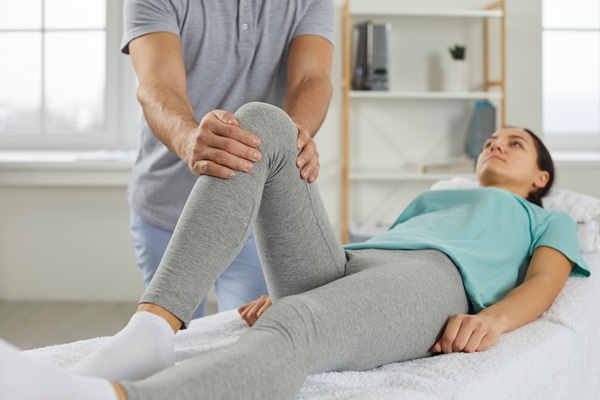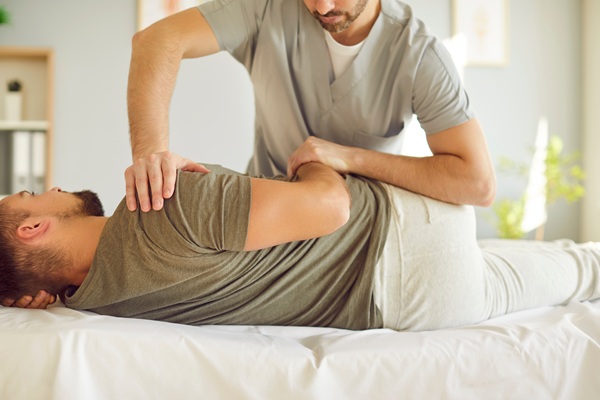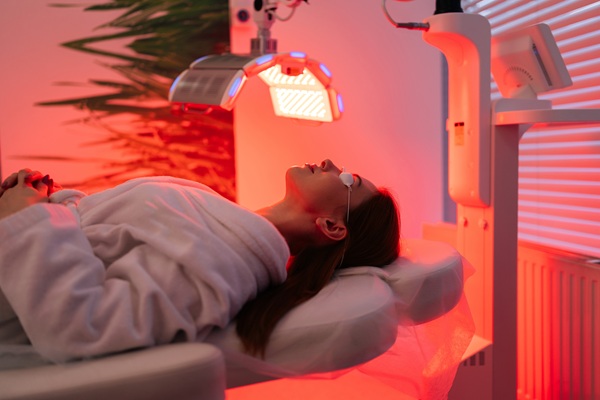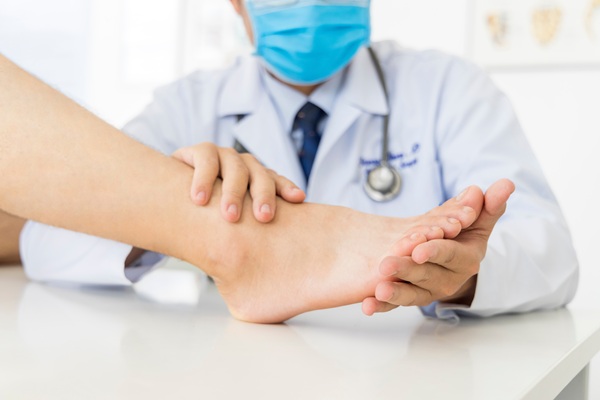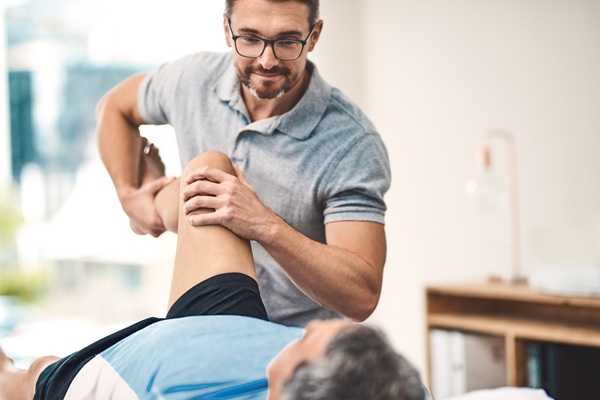Personal Injury RehabilitationAustell, GA
Recovering from a personal injury requires a specialized approach to restore mobility, reduce pain, and rebuild strength. Personal injury rehabilitation, provided by orthopedic doctors and PA-Cs, involves targeted treatments designed to support recovery and improve overall quality of life. Through customized plans, this rehabilitation helps patients regain their physical capabilities and confidence.
Delta Orthopedics in Austell and the surrounding area offers personal injury rehabilitation. Call us at 678-439-5216 to request an appointment and to discuss your treatment options.
The Goal of Personal Injury Rehabilitation
Personal injury rehabilitation aims to address physical trauma caused by accidents or injuries. The primary goal is to promote healing, enhance mobility, and prevent long-term complications. Whether managing sprains, fractures, or musculoskeletal injuries, this treatment focuses on restoring function and alleviating discomfort.
This rehabilitation combines evidence-based techniques tailored to the individual’s specific needs, ensuring a comprehensive recovery process. Patients benefit from reduced downtime, faster healing, and improved strength and endurance. Orthopedic doctors prioritize patient-centered care to help individuals safely return to their daily routines and activities.
“Personal injury rehabilitation aims to address physical trauma caused by accidents or injuries.”
Benefits of Personal Injury Rehabilitation
Personal injury rehabilitation offers numerous benefits, including:
- Customized Care: Tailored plans ensure treatments align with the patient’s unique needs.
- Faster Recovery: Accelerates the healing process with structured and consistent care.
- Improved Quality of Life: Enables patients to return to their preferred activities with confidence.
- Pain Reduction: Alleviates discomfort by targeting the injury site with effective therapies.
- Preventive Measures: Reduces the risk of recurring injuries by strengthening vulnerable areas.
- Restored Mobility: Helps patients regain full range of motion and physical function.
Not only does personal injury rehabilitation addresses immediate pain and mobility concerns, it also lays the foundation for long-term health and well-being. With personalized care, patients can recover more effectively and regain confidence in their daily activities.
“With personalized care, patients can recover more effectively and regain confidence in their daily activities.”
Candidates of Personal Injury Rehabilitation
Patients who have experienced musculoskeletal injuries, sprains, fractures, or joint pain may benefit from personal injury rehabilitation. This type of care is especially valuable for individuals facing challenges such as limited mobility, which can make performing daily tasks difficult due to pain or stiffness. It is also effective for those recovering from physical trauma caused by accidents or overuse injuries. If pain persists and does not improve with basic at-home care, it may be a sign that specialized rehabilitation is necessary. Additionally, patients recovering from surgery or significant physical setbacks can benefit from a structured rehabilitation program to restore strength, function, and overall well-being.
Candidates typically include individuals who require professional intervention to regain strength, improve mobility, and alleviate discomfort. Consulting an orthopedic doctor ensures a comprehensive evaluation and an effective treatment plan.
“This type of care is especially valuable for individuals facing challenges such as limited mobility, which can make performing daily tasks difficult due to pain or stiffness.”
The Rehabilitation Process
The rehabilitation process for personal injury begins with an in-depth consultation to assess the patient’s medical history, symptoms, and specific injuries. This evaluation may involve diagnostic tools to identify the extent of the injury and guide the treatment plan.
Treatment typically includes physical therapy exercises, pain management techniques, and supportive tools like braces or compression wraps. Orthopedic doctors may incorporate therapeutic modalities such as ultrasound, massage therapy, or manual manipulation to alleviate discomfort and promote healing.
Patients can expect regular sessions tailored to their progress, ensuring gradual improvements in strength and mobility. The frequency and duration of appointments vary based on the injury’s severity and the patient’s recovery goals.
“Orthopedic doctors may incorporate therapeutic modalities such as ultrasound, massage therapy, or manual manipulation to alleviate discomfort and promote healing.”
At-Home Care
Recovery extends beyond the clinic, making at-home care a vital component of personal injury rehabilitation. Patients are encouraged to follow prescribed exercise regimens to strengthen muscles and improve flexibility. Maintaining proper posture and ergonomic habits can also help prevent re-injury.
Nutrition plays a significant role in recovery, with a balanced diet supporting tissue repair and overall health. Patients should stay hydrated, get adequate rest, and follow any specific lifestyle adjustments their orthopedic doctor recommends.
By adhering to these guidelines and attending follow-up appointments, patients can ensure long-term success and regain their physical well-being.
“Patients are encouraged to follow prescribed exercise regimens to strengthen muscles and improve flexibility.”
Questions Answered on This Page
Q. What are the goals of personal injury rehabilitation?
Q. What are the benefits of personal injury rehabilitation?
Q. Who is a Candidate for Personal Injury Rehabilitation?
Q. What does personal injury rehabilitation treatment look like?
Q. What are patients required to do at home after treatment?
Start Your Recovery Journey Today
Do not let an injury hold you back. Take the first step toward healing and regaining your strength with personalized care designed to meet your unique needs. Contact us to book a consultation and get back to doing what you love. Call Delta Orthopedics at 678-439-5216 and take the first step toward recovery.
Frequently Asked Questions
Q. What is personal injury rehabilitation?
A. Personal injury rehabilitation is a specialized treatment plan designed to help patients recover from injuries by restoring strength, mobility, and function. The process often involves a combination of physical therapy, exercises, and techniques tailored to the patient's specific needs. The goal is to promote healing and prevent further complications or recurring injuries.
Q. What conditions does it treat?
A. This rehabilitation addresses musculoskeletal injuries, joint pain, fractures, and physical trauma. It is also effective for managing sprains, strains, and post-surgical recovery. Whether caused by accidents, overuse, or degenerative conditions, personal injury rehabilitation is designed to restore functionality and alleviate pain.
Q. How long does rehabilitation take?
A. The duration depends on the severity of the injury and the individual’s recovery goals. A tailored plan ensures optimal results, with progress monitored and adjustments made as needed. While some patients see improvements in weeks, others may require several months for full recovery.
Q. Is personal injury rehabilitation painful?
A. While some treatments may involve mild discomfort, they are carefully managed to ensure patient comfort and effectiveness. Discomfort typically indicates that the body is working through the healing process, and your therapist will adjust treatments to suit your tolerance. Communication is key, and patients are encouraged to voice any concerns during sessions.
Q. How can I support my recovery at home?
A. Following your orthopedic doctor’s recommendations for exercises, rest, and lifestyle adjustments is crucial for successful recovery. Staying consistent with prescribed home exercises and maintaining a healthy diet can significantly enhance the healing process. Additionally, avoiding activities that may strain the injury can help prevent setbacks and ensure steady progress.
Definitions
- Orthopedic Pain Management
- Treatment to reduce pain in the musculoskeletal system.
- Musculoskeletal Injuries
- Injuries affecting muscles, bones, or joints.
- Physical Therapy
- Exercises and techniques to improve movement and alleviate pain.
- Rehabilitation
- Restorative care focused on recovery from injuries.
- Pain Management Techniques
- Methods to alleviate and control pain without surgery.
- Flexibility
- The ability to move joints through their full range of motion.
- Ergonomics
- Practices designed to minimize strain and injury during daily activities.
- Posture
- The way a person holds their body when sitting, standing, or moving.
- Tissue Repair
- The body’s natural process of healing damaged tissues.
- Joint Pain
- Discomfort or soreness in joints due to injury, overuse, or medical conditions.
Contact Us
Delta Orthopedics is located at
1790 Mulkey Rd Build 9 Suite 1314
Austell, GA 30106

